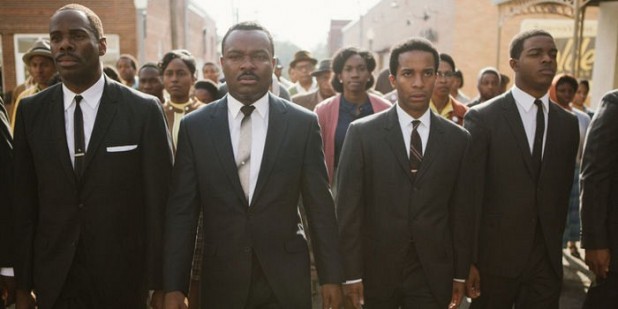Stuff Black People Don’t Like
September 3, 2015
Remember Selma?
Come on, Selma?
No? You don’t remember Selma?
Selma… right? You remember, don’t you?
Well, here’s a reminder of what happened after the cameras left. [Selma descended into gang violence, crime after Obama’s Bloody Sunday anniversary visit, Al.com, 9-1-15]:
The eyes of the nation were trained on Selma from the Christmas release of the film bearing the city’s name until March 7, when President Barack Obama, civil rights leaders and celebrities descended on the city en masse to commemorate its place in civil rights history.
It was a historic event, producing images of the nation’s first black president leading a crowd over the infamous Edmund Pettus Bridge, where civil rights protesters were savagely beaten by Alabama state troopers 50 years earlier.
The triumphant moment left many observers around the world with a sense that perhaps Selma had transcended its violent, racist past in the decades since Bloody Sunday.But in the months since the reenactment of the March on Selma, the city’s slums have descended into a period of frequent gang shootings and open-air drug dealing, leaving residents gripped by fear and police struggling to clean up the streets.
The peak of Selma’s gang violence problem came about seven weeks ago, when shootings were being measured per week, rather than per month or per year, according to Michael Jackson, district attorney for Alabama’s 4th Judicial Circuit.
Local authorities say they encounter gang members armed with heavy weaponry including AK-47s, MAC-10s and 40-caliber handguns with high-volume clips in Selma area’s worst neighborhoods, where fresh bullet holes still pepper the sides of some homes.
Gang ties and beefs are seldom cut and dry, but an unsolved murder from three months ago appears to have kicked off a retaliatory spat between rival crews from two of the city’s poorest and most neglected areas that continues to this day.
“We had a lot of open gang warfare between the Selmont gangs and the Craig Air Force Base gangs,” Jackson told AL.com Thursday evening at the Dallas County Courthouse in downtown Selma. “These are real gangs. These are not wannabe gang members. They’ll kill you and assault you without thinking much of it … You don’t want a situation where people are afraid to go outside.”
Selmont, a low-income community just across the Edmund Pettus Bridge from downtown Selma and the nearby Craig Air Force Base – which has been left to deteriorate since the military abandoned it in 1977 – have been the epicenters of the violence over the past month-and-a-half.
Stuck in impoverished, mostly African-American areas left destitute by decades of systemic neglect and policies that elevate white residents at the expense of their black neighbors, most residents of Selmont and Craig have little opportunity to better their stations, and many turn to drug dealing, gangs and crime.
Most of the indigent Dallas County schools that serve Selma’s roughest communities are ridden with gangs, with even some elementary school children turning to drugs and gang-like behavior, perpetuating the criminal lifestyle from one generation to the next, Jackson said.
Riding along with the 4th Judicial Circuit Drug Task Force through Selmont and Craig Thursday night, the potholed streets were dark and mostly desolate. Family members watched children play in the front yards of a few run-down homes and apartment complexes while groups of young men stood drinking beer and smoking marijuana in alleyways and quiet corners of the residential neighborhoods.
Ladies and gentlemen… this is the world black people (and their white enablers) marched across the Edmund Pettus Bridge to see brought to fruition.
The cameras have left, leaving behind the Visible Black Hand of Economics to ensure the regression to the black mean occurs in 80 percent black Selma… what’s left behind in 2015 Selma is exactly why those white police officers stood on the Edmund Pettus Bridge in 1965 to keep from coming to fruition.
 Daily Stormer The Most Censored Publication in History
Daily Stormer The Most Censored Publication in History



